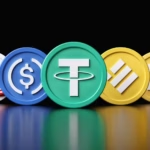In today’s globalized economy, cross-border payments are more important than ever. Whether it’s businesses paying overseas suppliers, migrants sending money home, or consumers shopping on international e-commerce platforms, the ability to move money across borders efficiently is essential. Yet for decades, cross-border payments were slow, expensive, and complicated. Now, thanks to rapid technological advances, the system is undergoing a major transformation—breaking long-standing barriers and bringing the world closer financially.
The Traditional Challenge of Cross-Border Payments
Historically, international money transfers relied on correspondent banking networks—a complex chain of intermediaries that handled transactions between countries. Each intermediary added time, cost, and potential error to the process.
For example, sending money from Malaysia to the U.S. could take several days, with high fees and unfavorable exchange rates. Limited transparency also made it difficult for users to track the status of their payments. These inefficiencies created friction for individuals and businesses alike, particularly in developing markets where access to global financial systems was limited.
Technology as the Game-Changer
The rise of financial technology (fintech) and digital innovation is revolutionizing cross-border payments. Modern solutions are focusing on three main goals: speed, affordability, and transparency. Below are some key technologies driving this change.
1. Blockchain and Distributed Ledger Technology (DLT)
Blockchain technology is one of the most disruptive forces in global payments. By enabling decentralized, peer-to-peer transactions, it removes the need for intermediaries and provides near-instant settlement across borders.
Cryptocurrency-based systems and stablecoins, such as USDC or Ripple’s XRP, offer an alternative way to transfer value globally with minimal fees. Additionally, traditional financial institutions are adopting blockchain-based systems like RippleNet and J.P. Morgan’s Onyx to streamline cross-border settlements securely and transparently.
2. Real-Time Payment Networks
New global payment networks are emerging to provide real-time transfers between countries. Initiatives such as SWIFT gpi (Global Payments Innovation) and ISO 20022 messaging standards have enhanced speed and traceability. Meanwhile, regional projects—like ASEANPay in Southeast Asia and SEPA Instant in Europe—are enabling faster, cheaper cross-border transactions.
These systems allow businesses to receive funds within seconds rather than days, improving cash flow and efficiency.
3. APIs and Open Banking Integration
Application Programming Interfaces (APIs) are transforming how financial institutions and fintech companies connect. Through open banking, third-party providers can securely access financial data and initiate international transfers directly from user accounts.
This innovation fosters competition and transparency, empowering customers to choose the most cost-effective and efficient payment options. It also supports the development of multi-currency wallets, where users can hold and transfer funds globally with ease.
4. Artificial Intelligence (AI) and Automation
AI enhances cross-border payment systems by improving fraud detection, optimizing currency conversion, and ensuring regulatory compliance. Automated identity verification (KYC) and transaction monitoring reduce manual errors and help prevent money laundering.
AI-driven analytics also help fintech providers predict user behavior and tailor payment solutions to specific market needs, further personalizing the global payment experience.
5. Central Bank Digital Currencies (CBDCs)
Governments worldwide are exploring CBDCs as a new form of digital money to facilitate faster, more secure international payments. For example, Project mBridge—a collaboration between the central banks of China, Thailand, Hong Kong, and the UAE—aims to create a multi-CBDC platform for instant cross-border settlements.
If successfully implemented, CBDCs could eliminate exchange rate inefficiencies and drastically reduce transaction times.
Benefits of Technological Transformation
- Lower Costs: Reduced reliance on intermediaries and automation lower transaction fees.
- Faster Transactions: Near-instant payments improve business operations and individual convenience.
- Increased Transparency: Real-time tracking provides visibility and trust in every transaction.
- Greater Financial Inclusion: Technology enables access to global payment systems even in underserved regions.
Challenges Ahead
Despite the progress, some challenges remain:
- Regulatory differences between countries can slow implementation.
- Cybersecurity risks must be managed as more systems move online.
- Interoperability across different networks and currencies still requires global collaboration.
To fully realize the potential of technology-driven cross-border payments, governments, regulators, and fintech innovators must work together to establish common standards and strengthen digital trust.
The Road Ahead
The future of cross-border payments is digital, decentralized, and data-driven. As technologies like blockchain, AI, and open banking mature, international transactions will become faster, cheaper, and more secure than ever.
Ultimately, technology is not just breaking barriers—it’s building bridges between economies, enabling businesses to thrive globally, and empowering individuals to connect financially across borders with a single tap.
Conclusion
Cross-border payments are at the heart of global trade and human connection. By harnessing the power of technology, fintech companies and financial institutions are dismantling old barriers and creating a more inclusive, efficient financial world. The transformation is already underway, and as innovation continues, the dream of borderless finance is becoming a global reality.














